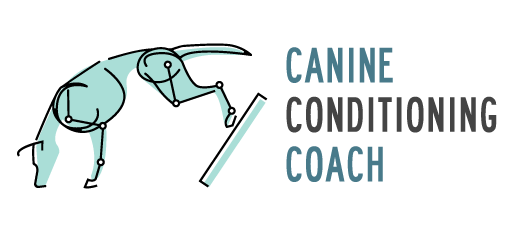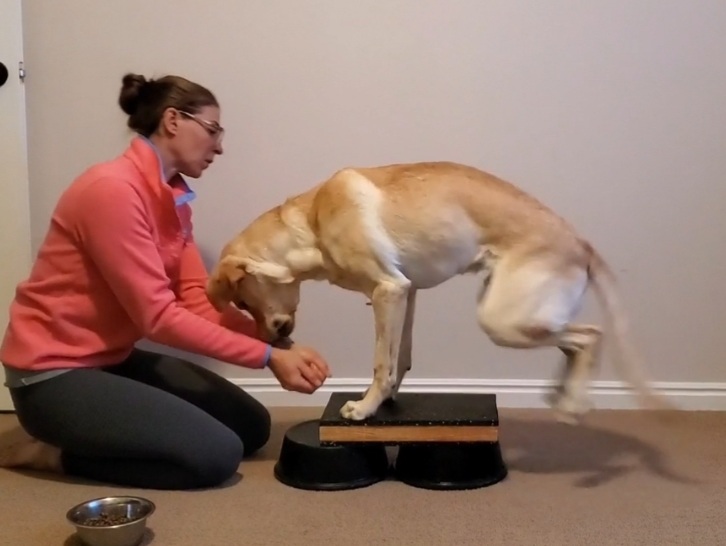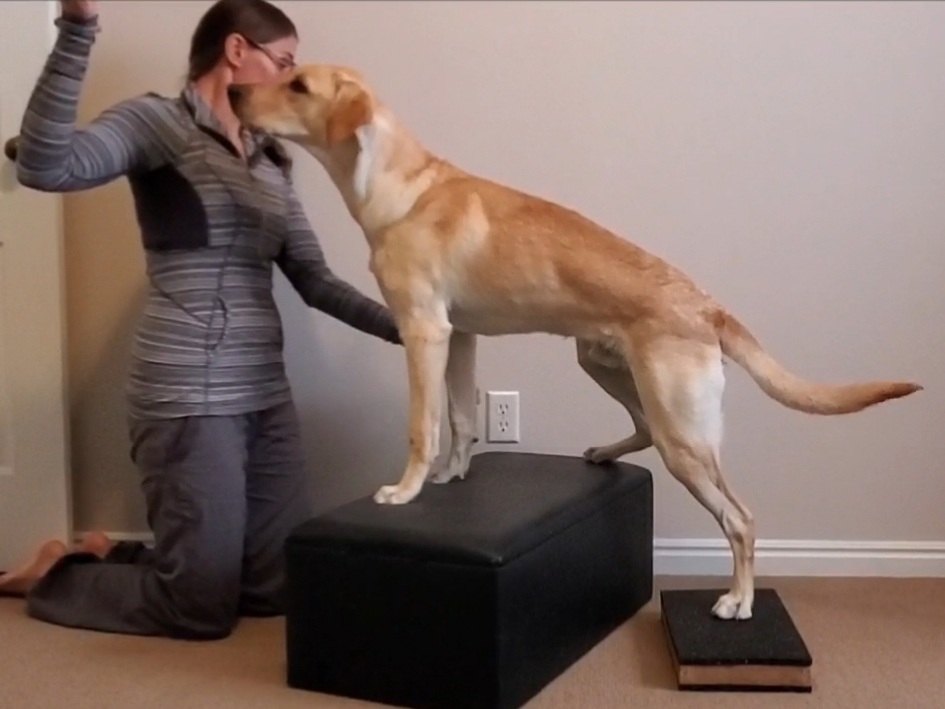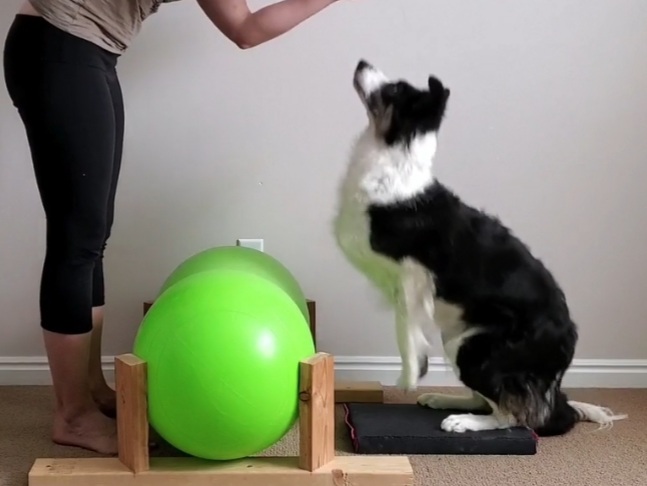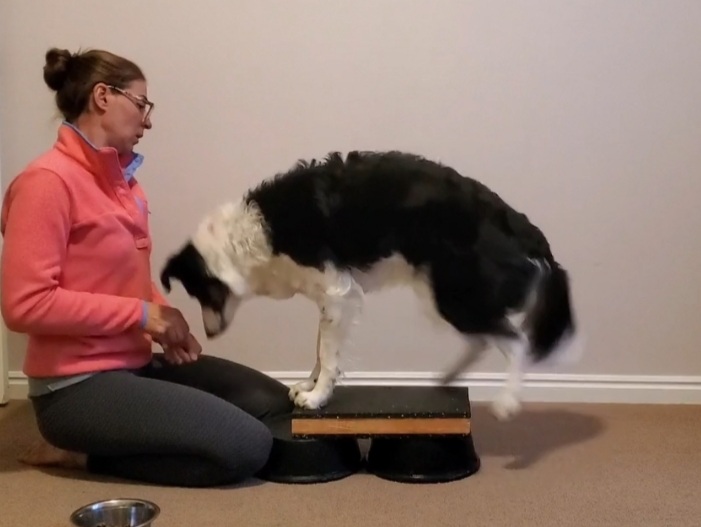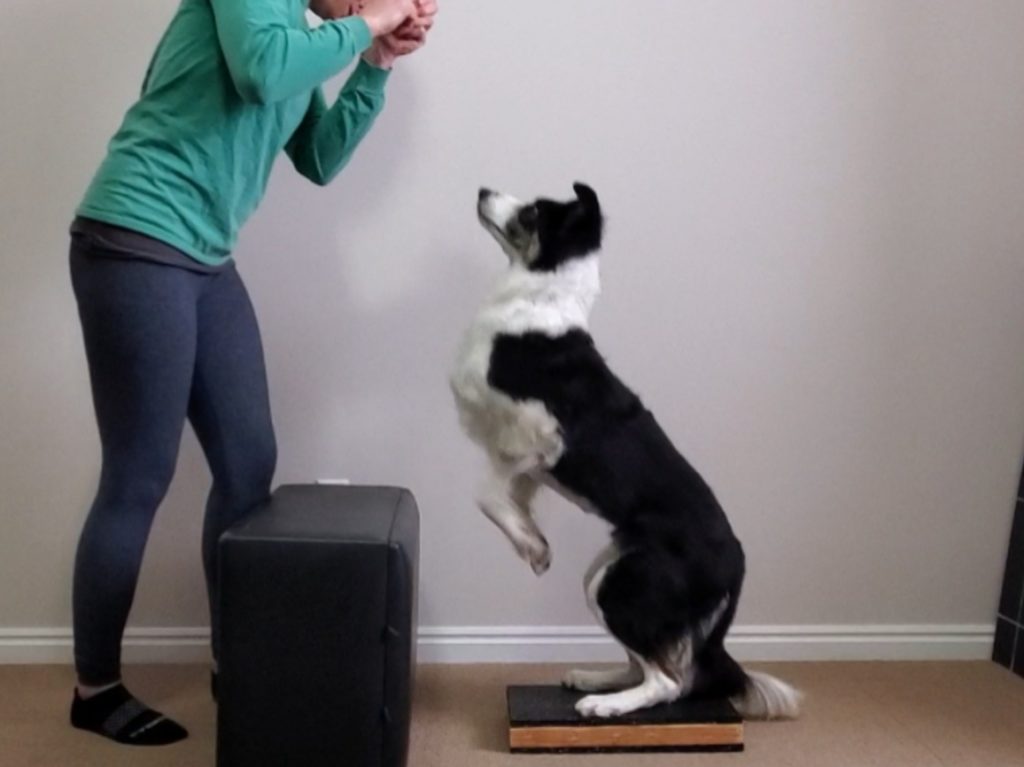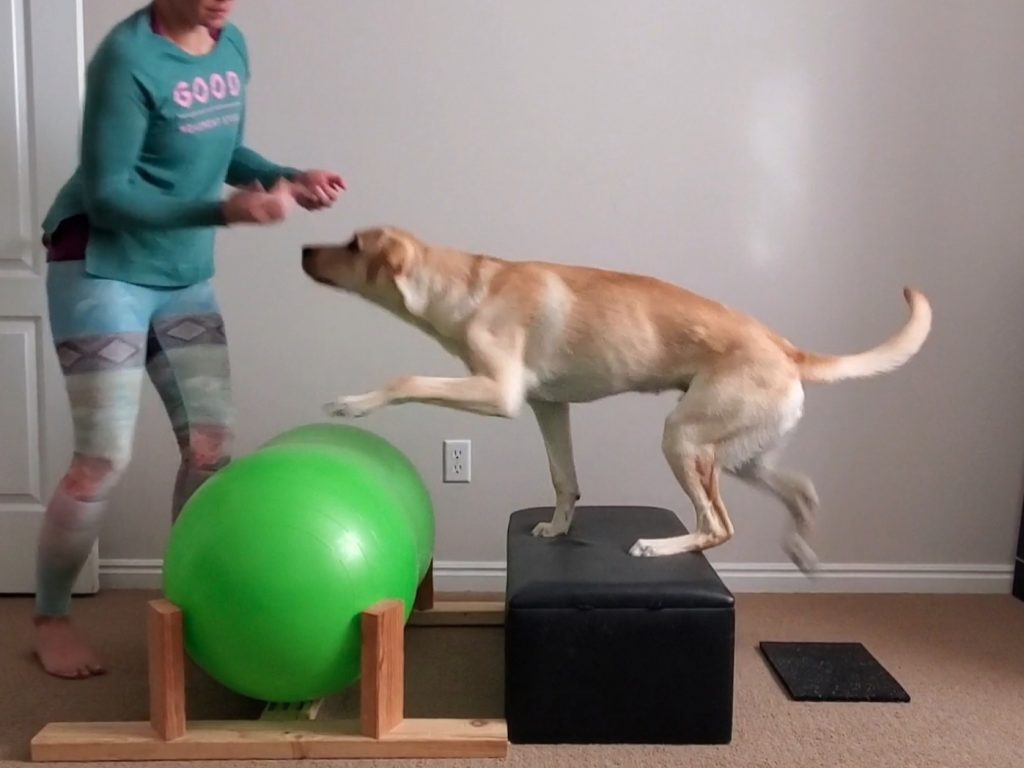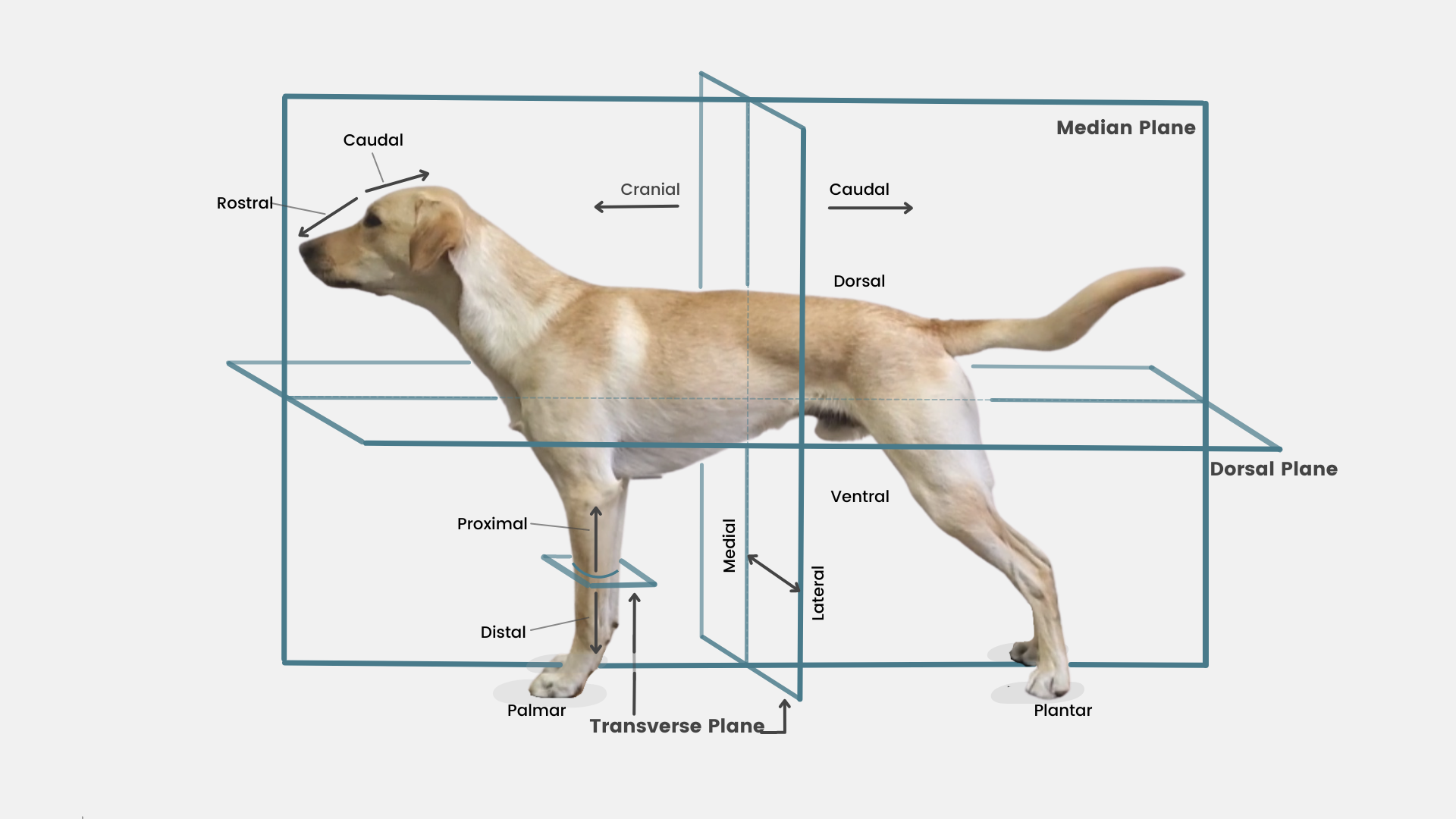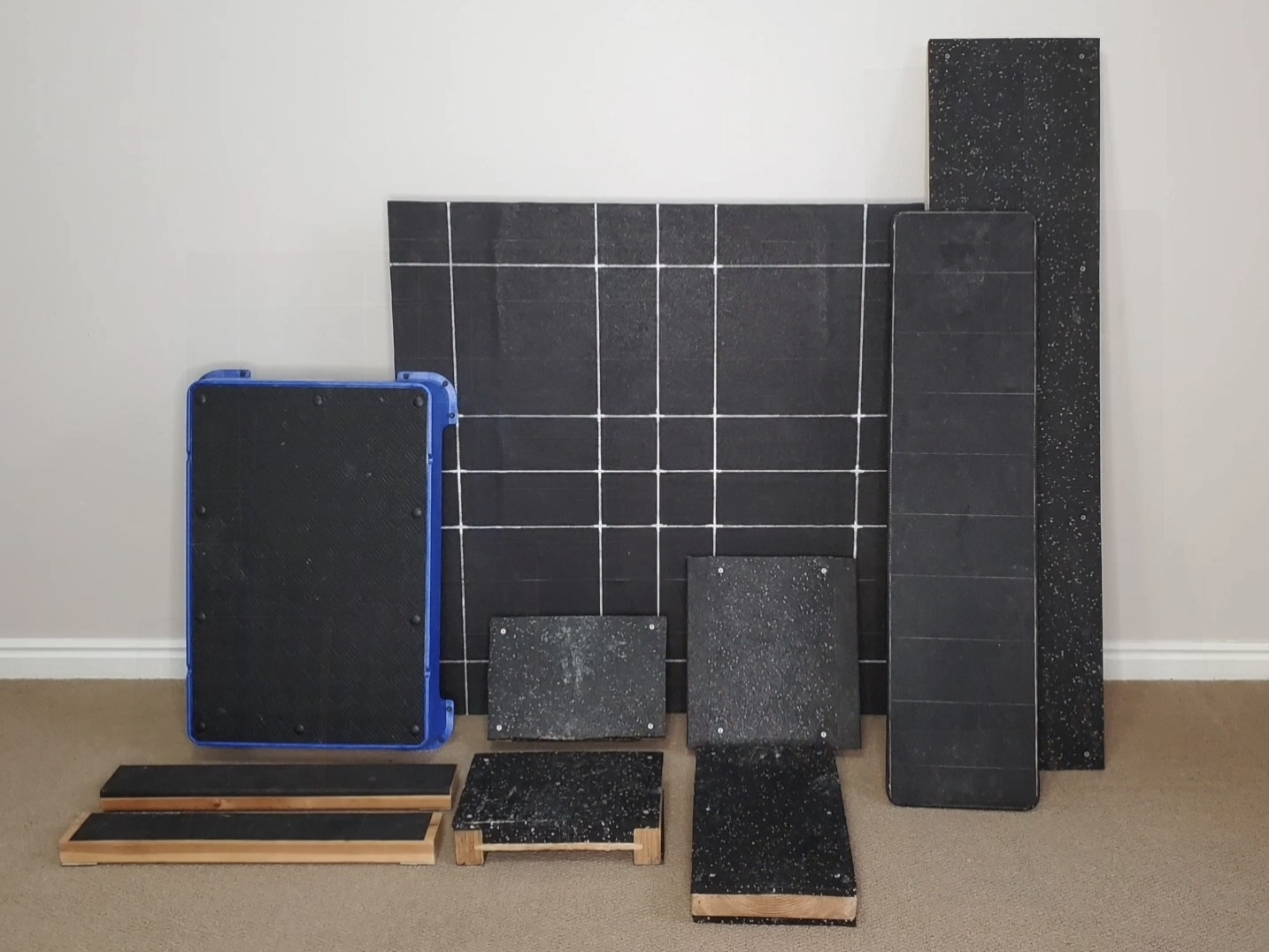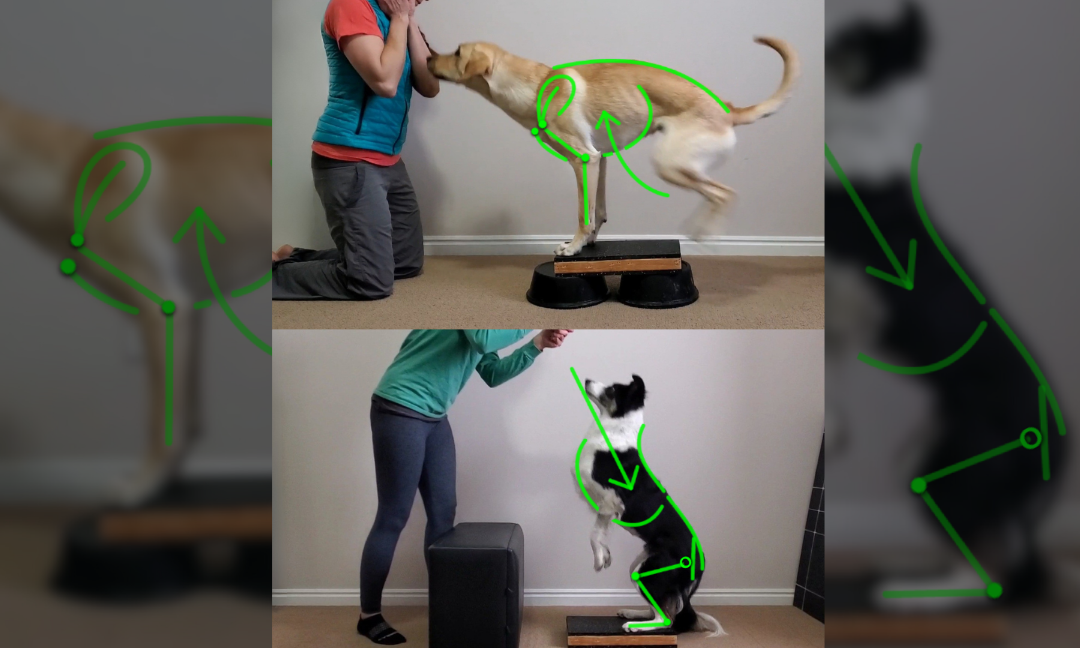Purpose: Mountain Climber is an integrated movement sequence that combines several movements with the intent of challenging total body fitness, precision, and coordination.
There are several component pieces that make up this exercise sequence, and each one is quite challenging on it’s own! Combining them not only increases the physical challenge to the muscles, but there’s also a proprioceptive and impulse control challenge. This would be considered an end range test of strength and coordination, as well as a way to integrate plyometrics into an exercise routine.
Equipment: 2 platforms at a staggered height. Peanuts can be used, but they are not required.
Targets:
- Mountain Climber Prep to Stand: This movement specifically targets the “stepping up” leg. It works to strengthen the quads and the hamstrings concentrically (shortening/contracting phase) and gluteals, specifically the lateral aspect of the hamstring and hip, as the dog is working hard to stabilize the pelvis during this single leg step up (unlike a double leg Hop Sit). Using a hand target to indicate to the dog which leg to step with helps the dog to alternate legs. Without this piece, it’s likely the dog will simply choose to step up with the dominant leg only.
- Rock Back Sit: This movement targets the quads and hamstrings in the eccentric phase (elongating/lowering), as well as the hip and stifle stabilizers. Lowering slowly, while maintaining parallel alignment through the rear limbs is key. We taught/proofed this in the Power-Up and Hiccup exercise.
- Kick Back Stand: This movement, especially from this height, and at this level of instability is a total body exercise! The shoulders have to load, the “core” (abdominals, hypaxial and epaxial muscles) has to support the spine and pelvis in an open kinetic chain, and the rear legs have to absorb the impact of landing.
Watchpoints: Because this is an expert level exercise and we’re integrating/combining foundation movements together, the watchpoints would be the same here as when executing the component pieces in isolation.
- During the Mountain Climber Prep, we are looking to keep the pelvis level, the stifle of the standing and lifting leg pointed straight forward. Watch for overextending/”hanging” on the proximal hip flexor of the standing leg/lumbar extension. During the step up, the dog should step forward with the ipsilateral forelimb (same side as the Mountain Climber Prep leg), so contralateral limbs are stabilizing simultaneously. The dog should step into a square stand, and props should be adjusted to encourage that.
- During the Rock Back Sit the hocks should be parallel and track hips width of space apart, stifle and toes tracking straight forward or close to straight forward, and spine neutral/minimizing lumbar flexion.
- During the Kick Back Stand the head should drop to lower the center of gravity, rotating the scapula and allowing the dog to pivot around the elbow as center of rotation. The cervical, thoracic and lumbar spine should be evenly curved watching for a flat spot at the withers. During the landing the epaxials/hypaxials/abdominals should be coordinated to decelerate the body, both rear feet should touch the ground simultaneously, and the hocks should be vertical.
Remember ALWAYS
Isolated → Integrated
Static → Dynamic
Stable → Unstable
